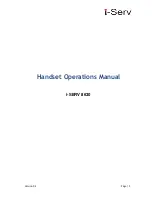
8
MECHANICAL BRAKE PAD AND ROTOR WEAR INDICATORS
Style A and B
- Inspect position
of wear indicator
pin
Style C and D -
Where the indicator
pin is covered (see
Figure 12), inspect
notches in carrier
and caliper or
backing plate - see
Page 9
A preliminary visual check of the condition of the brake pad/rotor
wear can be made without removing the wheels. See below
for the inspection to make for each of the three guide pin styles
in use for Bendix air disc brakes.
Note:
These inspections provide an indication of
when to schedule a full wheel-removed inspection of
the brake pads and rotor. The thicknesses of both the
pad and rotor will affect the wear indicator position at
which maintenance is actually needed.
These inspections do not constitute
“out-of-service” criteria.
Inspect the position of the guide pin
flexible rubber bushing. See Figure
10. When the guide pin has moved
in so that the ribbed section of the
flexible rubber bushing reaches the
point where it folds back in, it is time
to schedule a full wheel-removed
inspection of the pads and rotor. Note:
This is only an indication that the pads
and rotor are ready for inspection,
and does not necessarily mean that
maintenance is required.
FIGURE 10 - ROLLING BOOT-STYLE WEAR INDICATOR INSPECTION
Style A: Rolling Boot Style Wear Indicator
Time to Schedule
Inspection of
Pads and Rotor
Inspect the position of the guide pin
compared to the solid rubber bushing.
See Figure 11. When the guide pin
is aligned with the bushing, it is time
to schedule a full wheel-removed
inspection of the pads and rotor. Note:
This is only an indication that the pads
and rotor are ready for inspection,
and does not necessarily mean that
maintenance is required.
FIGURE 11 - SOLID RUBBER BUSHING-STYLE WEAR INDICATOR INSPECTION
Style B: Solid Rubber Bushing Style Wear Indicator
Where the Guide Pin is enclosed
by a cover - see next page for
inspection criteria.
Time to Schedule
Inspect ion of
Pads and Rotor
FIGURE 12 - PIN COVER
New
New









































